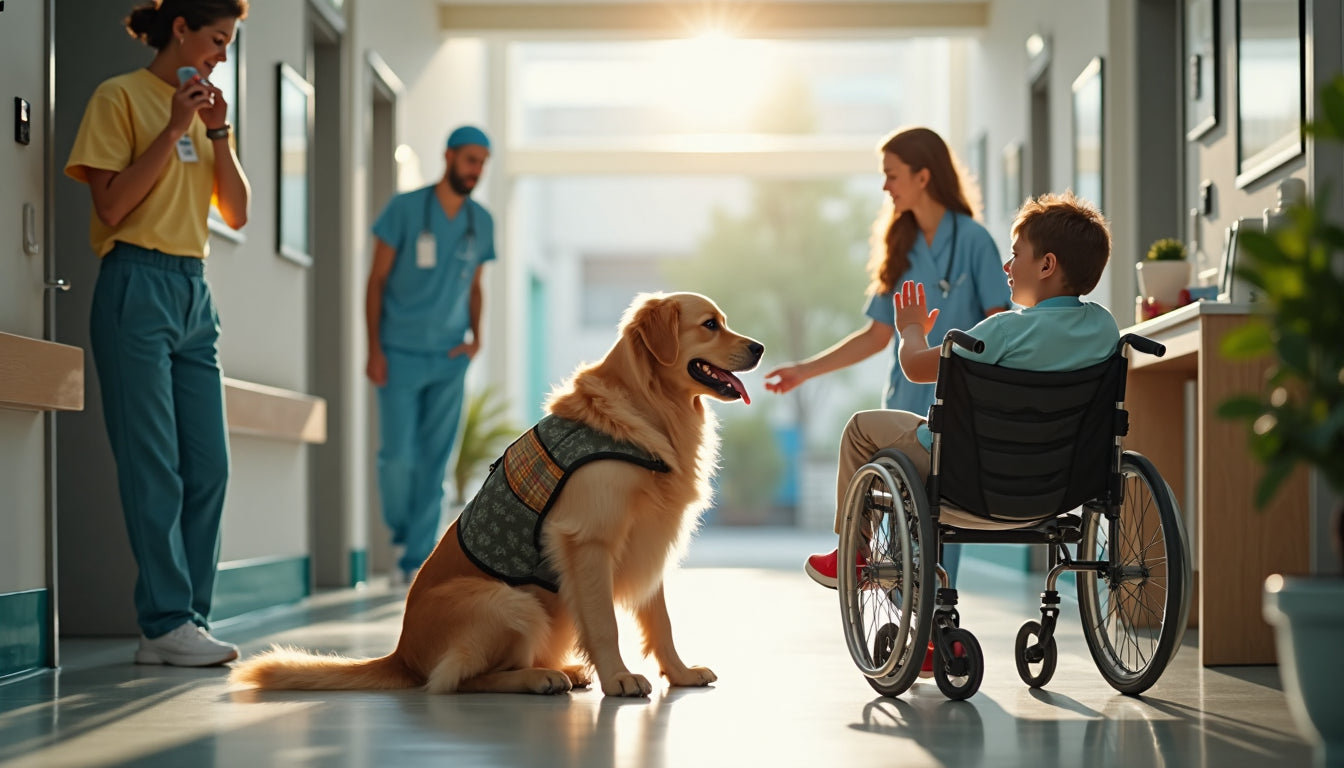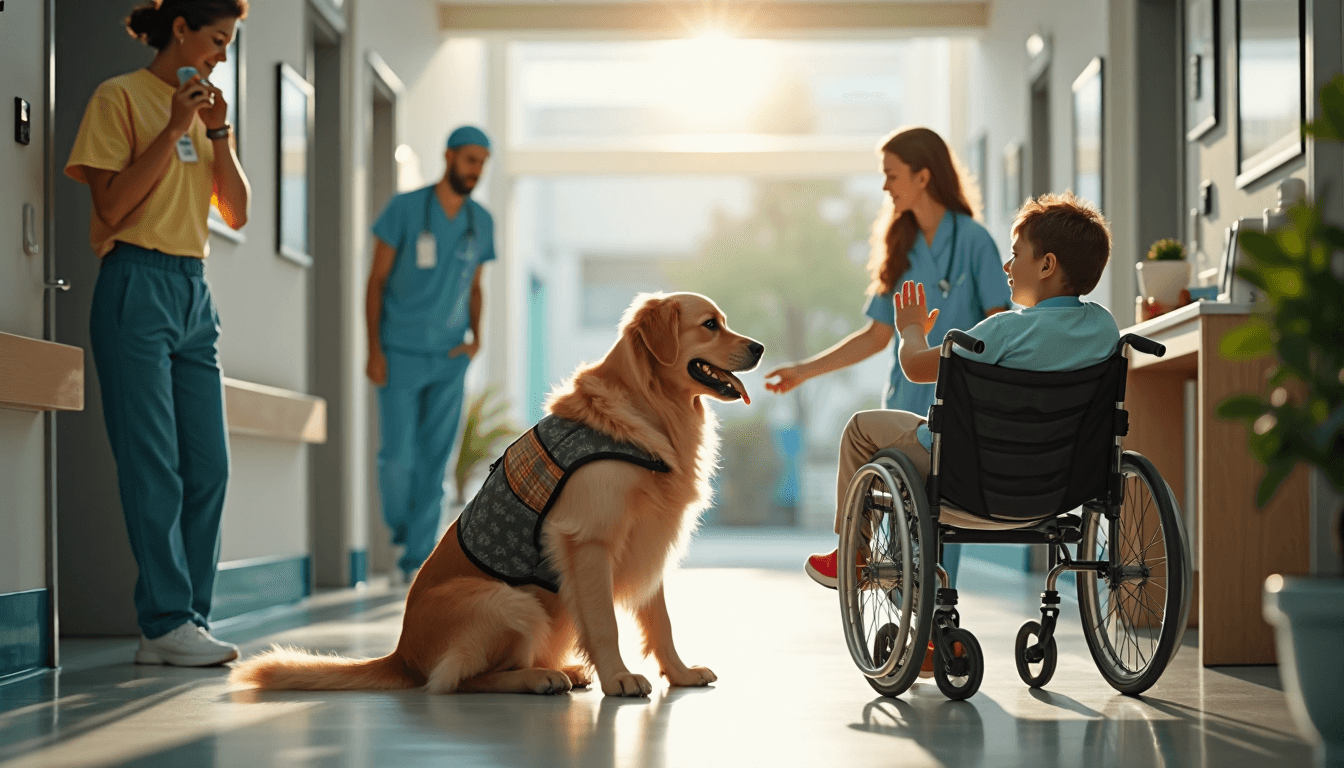
Therapy dog training is drawing massive attention as more hospitals and schools look for ways to support mental well-being. Surprising as it sounds, nearly 92 percent of therapy dog organizations require formal behavioral evaluations before any dog can start visiting. Most people guess that obedience alone is what matters most. The reality is much stricter—the screening for temperament, stress tolerance, and handler preparation is relentless. Here’s why most pets never qualify and what it truly takes to become a certified therapy dog team.
Table of Contents
- Understanding Therapy Dog Roles And Requirements
- Essential Steps In Training Therapy Dogs
- Common Challenges And Solutions In Therapy Dog Training
- Certification Steps And Resources For Therapy Dogs
Quick Summary
| Takeaway | Explanation |
|---|---|
| Therapy Dog Role | Therapy dogs provide emotional support in settings like hospitals and schools, distinct from service dogs, and require special training and evaluation to ensure suitability for these environments. |
| Training Essentials | Foundational obedience and socialization are crucial for therapy dogs, involving control of basic commands and exposure to various stimuli to enhance adaptability and emotional resilience. |
| Certification Requirements | Therapy dog certification typically involves passing the Canine Good Citizen test, completing a specialized training program, and demonstrating skills through team evaluations alongside comprehensive health checks. |
| Financial Commitments | Aspiring therapy dog handlers should budget for various expenses, including training classes, certification fees, and ongoing maintenance costs, while also considering time commitments and potential liability insurance. |
Understanding Therapy Dog Roles and Requirements
Therapy dogs play a critical role in providing emotional support, comfort, and healing across various settings. Unlike service dogs, therapy dogs are specially trained companion animals that work with their handlers to bring comfort to people in hospitals, nursing homes, schools, and other community environments.
The Unique Purpose of Therapy Dogs
Therapy dogs serve a distinct and important function in human care. Learn more about specialized dog training techniques that help prepare these remarkable animals for their important work. According to research from the American Veterinary Medical Association, these dogs undergo rigorous evaluation to ensure they can handle diverse and potentially stressful environments.
A comprehensive 2020 survey revealed critical requirements for therapy dog certification. Frontiers in Veterinary Science reported that 92% of therapy dog organizations mandate a formal behavioral evaluation, with 83% requiring dogs to be at least one year old before participating in visits. These strict guidelines ensure that only the most stable and well-trained dogs interact with vulnerable populations.
Essential Temperament and Behavioral Requirements
Not every dog can become a therapy dog. The National Center for Biotechnology Information outlines specific temperament requirements that are crucial for therapy dog success:
- Calm Disposition: Dogs must remain consistently gentle and composed in unpredictable environments.
- Social Adaptability: Ability to interact comfortably with strangers and remain relaxed in new settings.
- Emotional Stability: No signs of aggression, fear, or excessive anxiety when encountering different people or situations.
Veterinary health is equally important. Organizations typically require:
- Current vaccination records
- Annual health screenings
- Proof of good overall physical condition
- Negative testing for zoonotic diseases
Potential therapy dog handlers must also undergo training. This preparation involves learning how to guide their dogs, understand appropriate interaction protocols, and recognize signs of stress or overstimulation in both the dog and the people they’re visiting.
The selection process is intentionally stringent. Not every loving, well-trained dog will qualify as a therapy dog. It requires a special combination of temperament, training, and the unique bond between the dog and its handler. This careful screening ensures that therapy dogs can provide meaningful, safe, and therapeutic interactions across various settings.
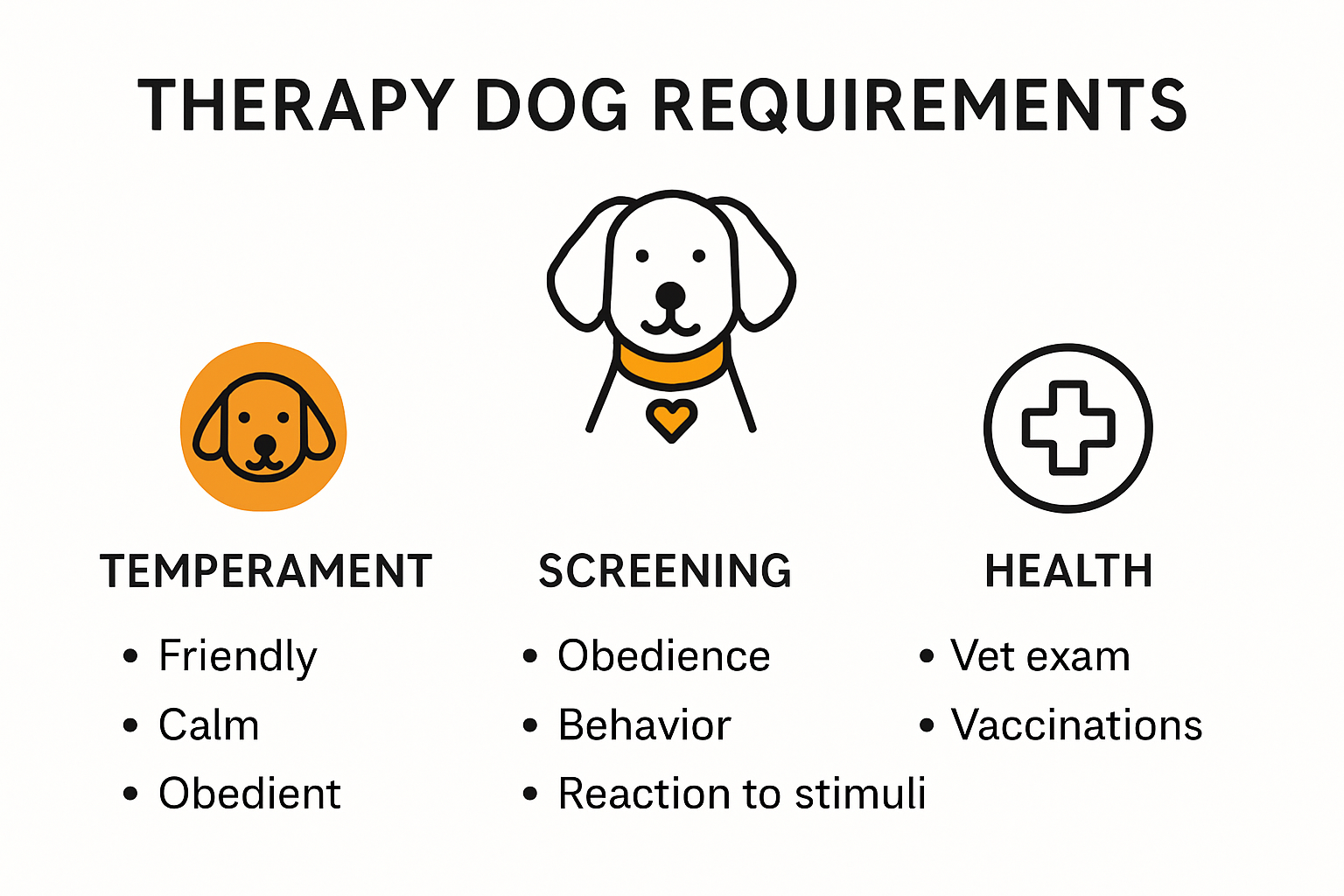
Essential Steps in Training Therapy Dogs
Training a therapy dog requires a systematic, patient approach that goes beyond basic obedience. Successful therapy dogs must demonstrate exceptional temperament, responsiveness, and emotional intelligence to provide meaningful support in various environments.
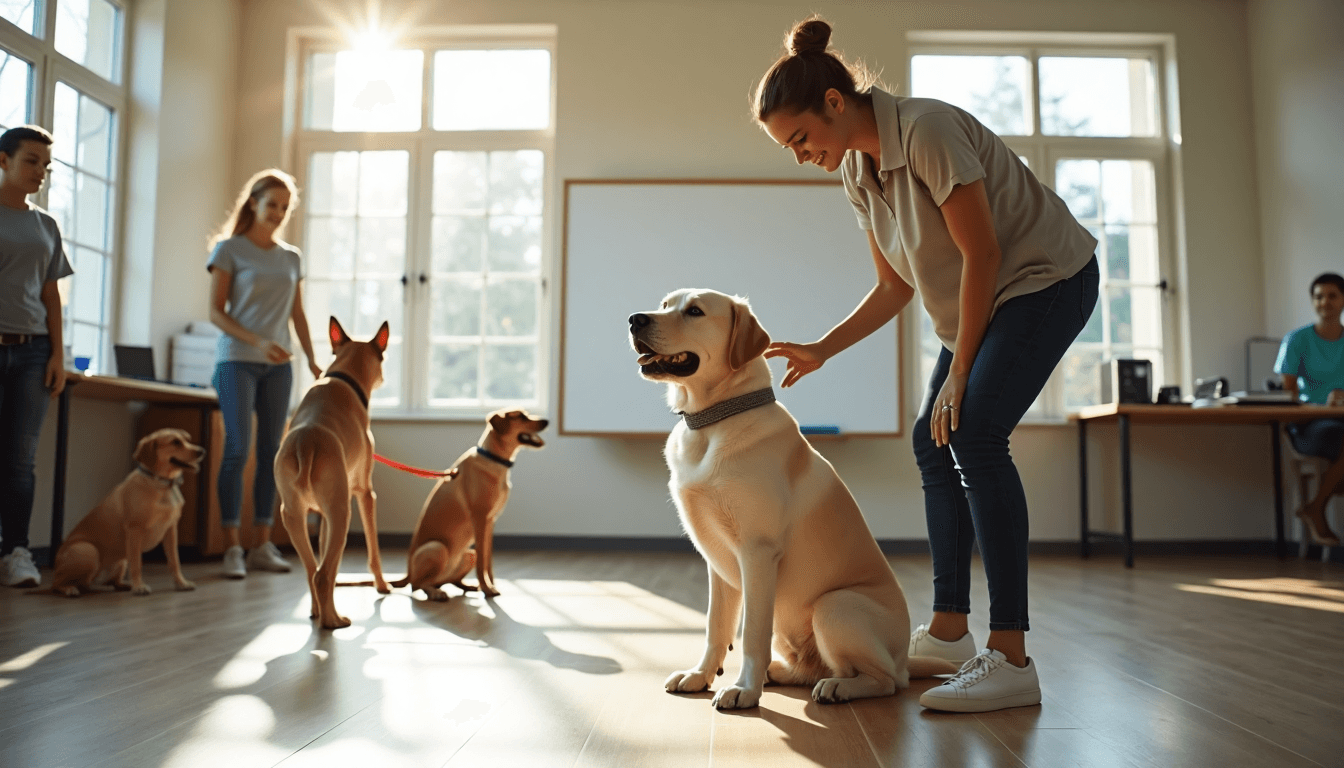
Foundational Obedience and Socialization
Explore advanced dog training techniques that can help prepare your dog for therapy work. According to the American Kennel Club, fundamental obedience training is critical. Dogs must master basic commands such as sit, stay, come, heel, and leave it. These skills form the cornerstone of reliable behavior in unpredictable settings.
Socialization is equally crucial. Pet Partners emphasizes exposing dogs to diverse environments, sounds, people, and situations. This process helps dogs develop adaptability and emotional resilience. Handlers should introduce their dogs to various stimuli like wheelchairs, medical equipment, different flooring surfaces, and people of various ages and appearances.
Specialized Therapy Dog Training Techniques
Positive reinforcement stands as the most effective training methodology. Research from veterinary behaviorists indicates that reward-based training builds stronger human-animal bonds and encourages desired behaviors. Key training elements include:
- Calm Interaction: Teaching dogs to remain composed during unexpected touches or loud noises
- Gentle Approach: Training dogs to approach people slowly and predictably
- Stress Recognition: Helping dogs understand and respond to human emotional cues
Handlers must also learn to read their dog’s body language and recognize signs of stress or overstimulation. This mutual understanding prevents potential negative interactions and ensures the dog’s well-being during therapy sessions.
Certification programs typically require dogs to pass rigorous behavioral assessments. These evaluations test the dog’s ability to remain calm, ignore distractions, and respond appropriately to various scenarios. Professional organizations like Pet Partners or Therapy Dogs International provide structured certification processes that assess both the dog’s temperament and the handler’s skills.
Consistent practice and gradual exposure are key. Start with short, controlled interactions and progressively increase complexity. Some handlers use mock therapy scenarios to help dogs become comfortable with different environments and interaction styles. Remember that not every dog will become a successful therapy dog, and that’s okay. The most important factors are the dog’s natural temperament and willingness to engage positively with people.
Common Challenges and Solutions in Therapy Dog Training
Therapy dog training presents unique challenges that require specialized approaches and understanding. Handlers must navigate complex emotional and behavioral landscapes to ensure their dogs can provide effective support in diverse environments.
Managing Stress and Emotional Resilience
Learn about advanced training strategies that help address potential behavioral obstacles. According to research published in Animal Studies, ensuring the welfare of therapy dogs is crucial. Canine stress can significantly impact performance, making it essential for handlers to recognize and mitigate potential triggers.
Key stress management techniques include:
- Short Session Intervals: Limiting therapy interactions to prevent mental exhaustion
- Consistent Routine: Establishing predictable pre and post-visit recovery periods
- Emotional Monitoring: Reading subtle body language signals indicating potential overstimulation
Behavioral Adaptation and Environment Challenges
Dog Training Experts highlight that consistent training routines and gradual exposure are critical for addressing behavioral inconsistencies. Dogs must learn to remain calm in unpredictable settings, from noisy hospitals to quiet nursing homes.
Environmental challenges require strategic preparation. National Institutes of Health research emphasizes the importance of comprehensive planning when integrating therapy dogs into professional settings. This includes:
- Addressing potential allergy concerns
- Ensuring legal liability protections
- Creating safe interaction protocols
- Developing clear communication strategies between handlers and host institutions
Professional organizations recommend developing a comprehensive training strategy that goes beyond basic obedience. This involves teaching dogs to:
- Ignore unexpected movements
- Remain calm during sudden loud noises
- Adapt to different physical contact styles
- Understand subtle human emotional cues
Handlers must also be prepared for scenarios where a dog might not be suitable for therapy work. Not every well-trained dog will have the temperament required for consistent, gentle interactions. Recognizing and accepting a dog’s limitations is as important as training its strengths.
Successful therapy dog training requires patience, consistent practice, and a deep understanding of both canine behavior and human emotional needs. By anticipating challenges and implementing strategic solutions, handlers can prepare their dogs to provide meaningful, safe, and compassionate support across various therapeutic environments.
Certification Steps and Resources for Therapy Dogs
Navigation through therapy dog certification requires a systematic approach and comprehensive understanding of the requirements. Prospective therapy dog teams must demonstrate exceptional skills, temperament, and commitment to provide meaningful support in various therapeutic settings.
Official Certification Pathways
Explore essential training strategies that can help prepare for certification. The American Kennel Club offers a structured Therapy Dog Program that awards official titles to dogs meeting specific criteria. Certification typically involves multiple critical steps:
- Passing the Canine Good Citizen (CGC) test
- Completing a specialized therapy dog training program
- Registering with a recognized therapy dog organization
- Undergoing a comprehensive team evaluation
Here is a table summarizing the main steps required for therapy dog certification and what each involves.
| Step | Description |
|---|---|
| Canine Good Citizen Test | Assessment of basic obedience and manners |
| Specialized Training Program | Structured coursework focused on therapy-specific skills |
| Organization Registration | Officially registering with a recognized therapy dog group |
| Team Evaluation | Assessment of both dog and handler working together in real-life scenarios |
Organizational Certification Requirements
Pet Partners provides a detailed certification process that includes several crucial components:
- Handler Training: Mandatory online course covering interaction protocols
- Team Evaluation: Comprehensive assessment of dog and handler capabilities
- Background Check: Ensuring handler reliability and safety
- Registration: Two-year volunteerism coverage
The certification process typically requires:
- Minimum dog age of one year
- Documented health records
- Proof of current vaccinations
- Temperament assessment
- Obedience skill demonstration
Below is a table summarizing key organizational therapy dog certification requirements.
| Requirement | Description/Detail |
|---|---|
| Minimum Dog Age | 1 year |
| Health Records | Up-to-date vaccinations & annual health screenings |
| Temperament Assessment | Evaluation for calmness, sociability, and stability |
| Obedience Skills | Demonstrated basic commands and control |
| Handler Training | Completion of specified courses |
| Background Check | Required for handler |
Financial and Practical Considerations
Certification involves various costs and commitments. The National Therapy Dog Organization recommends handlers budget for:
- Training classes: $200-$500
- Certification fees: $50-$250
- Required equipment: $100-$300
- Ongoing training and maintenance: Variable costs
Handlers should also consider:
- Time commitment for training
- Regular health checks for the dog
- Continuous skill maintenance
- Potential liability insurance
Important resources for aspiring therapy dog teams include:
- Local training centers
- Veterinary professionals
- Established therapy dog organizations
- Online training platforms
- Community support groups
Successful certification requires dedication, patience, and a genuine commitment to providing compassionate support. Not every dog will become a certified therapy dog, but those who do can make profound differences in people’s lives. Handlers must remain realistic about their dog’s capabilities and be prepared to support their animal through the entire certification journey.
Frequently Asked Questions
What are the requirements for a dog to become a therapy dog?
Therapy dogs must meet specific temperament and behavioral criteria, including a calm disposition, social adaptability, and emotional stability. They also need to pass health screenings, vaccination checks, and undergo formal behavioral evaluations.
How do I train my dog to become a therapy dog?
To train your dog as a therapy dog, start with foundational obedience and socialization. Basic commands like sit, stay, and come are essential. Gradually expose your dog to diverse environments and situations while using positive reinforcement to encourage desired behaviors.
What is the certification process for therapy dogs?
Certification usually requires passing the Canine Good Citizen test, completing a specialized therapy training program, and successfully undergoing an evaluation with a recognized therapy dog organization. Dogs typically need to be at least one year old to qualify.
What are some common challenges faced in therapy dog training?
Common challenges include managing a dog’s stress and emotional resilience during training. Handlers must ensure their dogs can remain calm in various environments and recognize signs of overstimulation to provide safe and effective therapy sessions.
Unlock Seamless Communication for Therapy Dog Teams
Training your therapy dog is a journey filled with dedication and attention to detail. As you push through challenges like building emotional resilience, social adaptability, and reliable behavior in busy environments, you deserve the right tools to support your dog’s growth. One recurring challenge discussed in our Complete 2025 Guide is the need for clear, stress-free communication, especially during high-stakes therapy sessions.
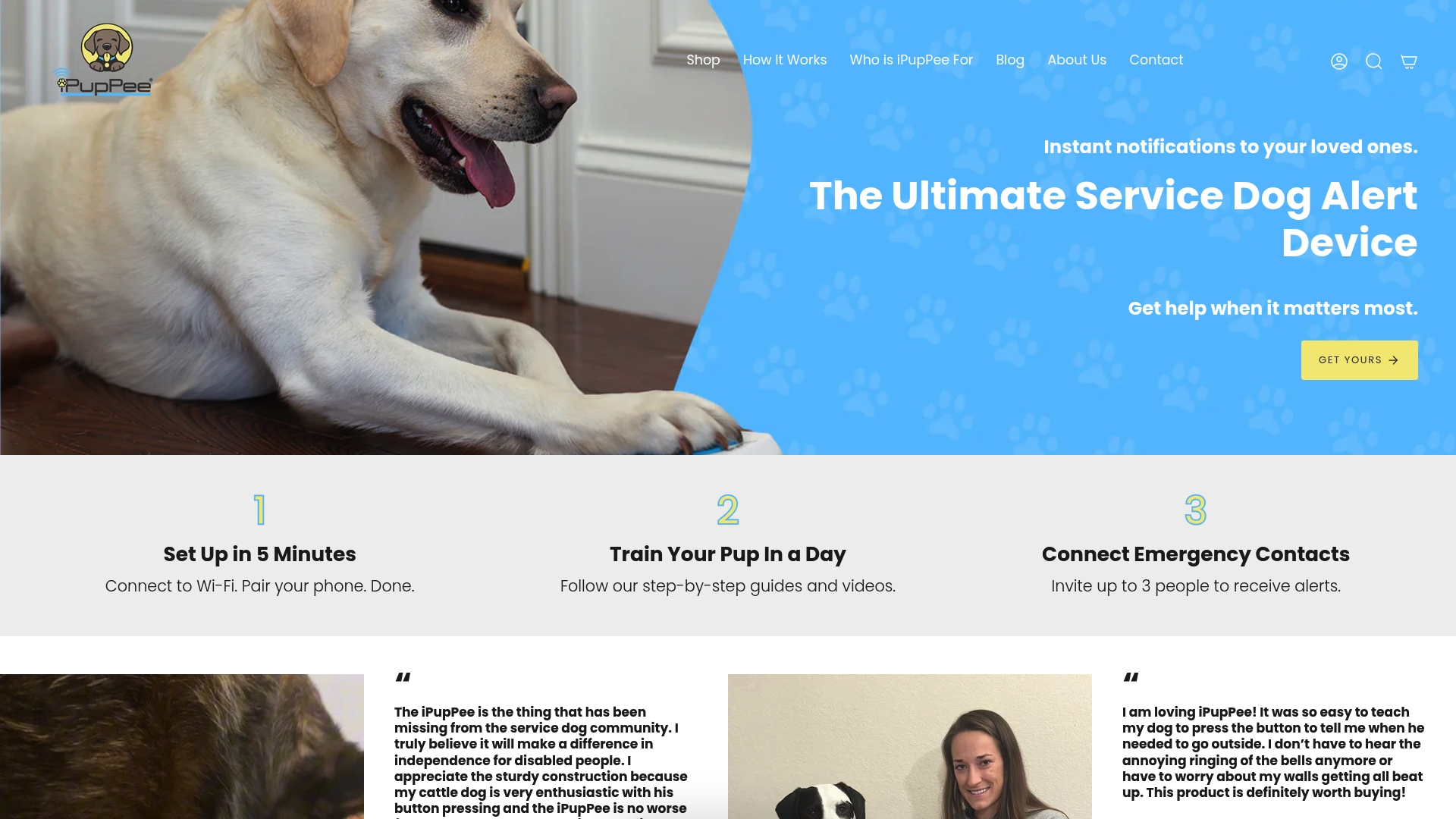
Advance your therapy dog’s training and bring peace of mind to every visit with the innovative iPupPee communication device. Empower your dog to alert you in any situation and support safe, independent interactions whether you are helping others in schools, hospitals, or community spaces. Visit ipuppee.com today to see how you can strengthen your therapy team’s confidence and contribute to better outcomes for everyone you serve.
Recommended Articles
-
https://ipuppee.com/blogs/news/service-dog-training-challenges-2025)
-
https://ipuppee.com/blogs/news/dog-behavioral-training-guide-2025)
-
https://ipuppee.com/blogs/news/training-techniques-for-dogs-guide-owners-handlers-2025)
-
https://ipuppee.com/blogs/news/dog-response-training-guide-owners-handlers-2025)
-
https://ipuppee.com/blogs/news/why-train-rescue-dogs-benefits-2025)

